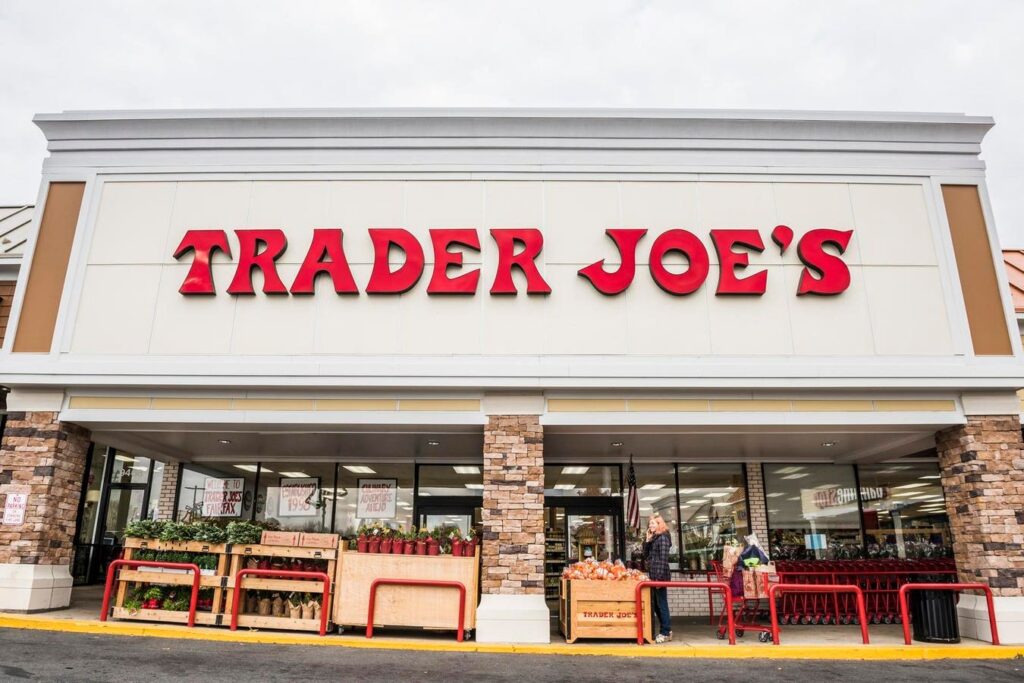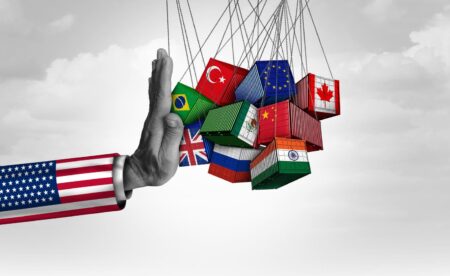Meet Aldi’s little cousin, one of America’s top two favorite grocers, known for its exotic-yet-affordable private label products and great customer service.
The pandemic that rendered malls and department stores extinct has also changed the way consumers prefer to shop for food. As we noted here a year ago, the sprawling suburban supermarket and big box destination retailers have shifted their growth strategies by adding new stores in outdoor shopping centers with smaller footprints, a smaller selection of products, with shorter drives for shoppers.
One of the leading beneficiaries of this trend in the grocery business has been Trader Joe’s, the Hawaii-themed chain famous for its eclectic private label foods featuring international flavors and ingredients at competitive prices.
According to the most recent American Customer Satisfaction Index, a widely-followed nonprofit that crunches data from about 41,000 shoppers in a dozen or so retail categories, Trader Joe’s is now tied (with Publix) for first place among grocers.
The core Trader Joe’s (TJ’s) customer is not just satisfied, but bordering on fanatic. According to a recent Quartz.com article, TJ-branded, Easter-themed tote bags that were introduced last month at $2.99 sold out so fast that a secondary market developed. On sites like eBay, sellers are currently asking up to $100 for the set of four.
On social media sites like Instagram, TikTok, and Reddit, fans post alerts about hot new products with breathless headlines—“Watermelon Plums spotted at Trader Joe’s!”
The things people like about TJ’s—great customer service, low prices, and an eclectic product mix—are similar to the things shoppers like about another small-footprint grocer we looked at recently—Aldi. No surprise, perhaps, since the original owners of Aldi’s and TJ’s were brothers: Karl and Theo Albrecht. Together they operated a chain of stores in Germany from the 1940s until 1966 when, according to lore, the brothers decided to split after one of them objected to selling cigarettes.
The separation produced two financially and legally separate entities—Aldi Nord and Aldi Süd. Today, Aldi Süd operates about 12,000 stores worldwide, including more than 2,500 Aldi stores in the US.
Aldi Nord operated largely in Europe until 1979 when it bought Trader Joe’s, a California-based grocer, from its founder, Joe Coulombe. It remains a private company today, still owned by a branch of the Albrecht family.
The pandemic was good to TJ’s. Revenue for the fiscal year ended this past Jan. 31 was $56.4 billion, a 35% increase from five years earlier. Like Aldi, TJ’s has been building out its fleet of stores (currently more than 600), a third of which are in California with the rest mostly clustered in the Northeast.
In step with the trend among large retailers to expand by building smaller locations closer to customers, TJ’s signage now includes the tagline, “Your Neighborhood Grocery Store.”
The Aldi quirk that has helped fuel its success is the “Aldi Finds” aisles in each store, a collection of constantly changing merchandise at bargain prices that customers refer to as the “aisle of shame.” Among TJ’s quirks is its Hawaiian theme displays, creative chalkboards, and “subtle hippie aesthetic.” Its private label items are playfully titled and colorfully labeled, inspiring one customer, after visiting 150 stores, to create a book—The Art of Trader Joe’s.
A deep bench of knowledgeable alert associates wearing Hawaiian shirts are often cited for such good deeds as gifting a bouquet of flowers to a weepy widow. According to industry news site GroceryDive.com, “Trader Joe’s focuses on fostering the social experience of grocery shopping.”
It is clear that Trader Joe’s has gotten it right in understanding and serving its customers.
Read the full article here
















